|
Books Should Be Free Loyal Books Free Public Domain Audiobooks & eBook Downloads |
|
|
Books Should Be Free Loyal Books Free Public Domain Audiobooks & eBook Downloads |
|
Nature Books |
|---|
|
Book type:
Sort by:
View by:
|
By: Robert O. Fielding | |
|---|---|
 Spices, their histories
Spices, their histories
A surprisingly complete and informative 64-page booklet describing common spices used in cooking and for other purposes. Written especially for grocers, but helpful for all interested. - Summary by KevinS | |
By: Robert Sterling Yard (1861-1945) | |
|---|---|
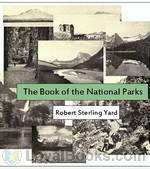 The Book of the National Parks
The Book of the National Parks
Robert Sterling Yard (February 1, 1861 – May 17, 1945) was an American writer, journalist, and wilderness activist. Born in Haverstraw, New York, Yard graduated from Princeton University and spent the first twenty years of his career in the editing and publishing business. In 1915, he was recruited by his friend Stephen Mather to help publicize the need for an independent national park agency. Their numerous publications were part of a movement that resulted in legislative support for a National Park Service (NPS) in 1916... | |
By: Robert W. Service (1874-1958) | |
|---|---|
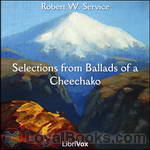 Selections from Ballads of a Cheechako
Selections from Ballads of a Cheechako
These twelve poems are from Ballads of a Cheechako which was Robert W. Service’s third book of Yukon poems, published in 1909. The word Cheechako, from Chinook Jargon, originated in the United States (Alaska) and Canada (Yukon) and was imported into local English during the Yukon gold rush that began in 1896. Cheechako, is a non derogatory word meaning “newcomer” or “tenderfoot.” The derivation looks something like this: chee new cha come ko home. | |
 Ottawa Folk Festival Robert Service Collection
Ottawa Folk Festival Robert Service Collection
The Spell of the Yukon by Robert Service with patrons, musicians and organizers. Robert Service is an iconic Canadian poet. | |
By: Rupert Brooke | |
|---|---|
 Collected Poems of Rupert Brooke
Collected Poems of Rupert Brooke
Rupert Chawner Brooke (August 3, 1887 – April 23, 1915) was an English poet known for his idealistic War Sonnets written during the First World War (especially The Soldier), as well as for his poetry written outside of war, especially The Old Vicarage, Grantchester and The Great Lover. He was also known for his boyish good looks, which prompted the Irish poet William Butler Yeats to describe him as “the handsomest young man in England”. | |
By: S. Louise Patteson (1853-1922) | |
|---|---|
 How To Have Bird Neighbors
How To Have Bird Neighbors
The author provides the listener with anecdotes from her life of her experiences with birds. She describes their habits and antics, their food favorites, their preferred nesting practices, and what can be done to encourage birds to become "neighbors". She also provides instructions on making a birdhouse. | |
By: Selina Gaye (1840-1914) | |
|---|---|
 The World's Lumber Room
The World's Lumber Room
If this book were written today, it would be called "The Story of the World's Rubbish".That may not sound a promising subject for a book, but we are taken on a journey all over the world (and beyond) to explain the many varieties of dust and refuse - animal, vegetable and mineral - how it is made both by man and by nature, what happens to it, and why we need it. We find that recycling is nothing new: man has been doing it for centuries, and nature has been doing it for billions of years. As every schoolboy knows, 'matter is neither created nor destroyed', so it stands to reason that every particle of it must be somewhere... | |
By: Sidney Licht (1907-1979) | |
|---|---|
 Music in Medicine
Music in Medicine
In spite of a spirited rebirth of the movement towards the establishment of a system of healing based on music, there are many valuable uses of music in medicine which might suffer a like fate unless a critical analysis of the worth of music as a therapeutic agent is effected before Musical Therapy reaches the dubious distinction of classification as a healing cult. This book has been written with a view to preserving for medicine that which is good for patients, and in an attempt to aid musicians under medical guidance in using music to help the sick. | |
By: Sir Alfred Edward East (1844-1913) | |
|---|---|
 Art of Landscape Painting in Oil Colour
Art of Landscape Painting in Oil Colour
Sketching from Nature, Equipment, Colour, Composition, Trees, Skies, Grass, Reflections, Distance -- chapters rich with timeless oil painting advice by a master landscape artist, Sir Alfred East. East had an exceptional ability to capture the individuality of trees, the quiver of their leaves against the sky. “If we look at a photograph, the edges of the trees do not give you the feeling that the tree is a living thing, they are marked with hard precision against the light, like a solid building, and yet at the same time if we see them in Nature we hear the whisper of their leaves and know that they live and breathe... | |
By: Sir Francis Galton (1822-1911) | |
|---|---|
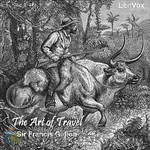 The Art of Travel
The Art of Travel
The Art of Travel is a handbook of practical advice for the adventure seeking Victorian. We hear how to organize all steps of a voyage, from the very beginnings (qualifications of a traveller, how to organize an expedition, the perfect outfit), to the actual trip (how to choose a bivouac, huts and tents, what game to shoot - and how, dealing with (hostile) savages), until the final, hopefully successful, return of the traveller (arranging memoranda). | |
By: Sir Hugh Fraser (1903-1966) | |
|---|---|
 Amid the High Hills
Amid the High Hills
A regular contributor to magazines and periodicals on outdoor pursuits, in this work, Fraser discusses salmon fishing, deer stalking, fauna in the forest, high hills and more. - Summary by Lynne Thompson | |
By: Stephen Smith (1823-1922) | |
|---|---|
 City That Was
City That Was
This 1911 history of the public health revolution that transformed New York City in the nineteenth century is also about every city and town of the world and the sanitary challenges that each encountered. Stephen Smith was an American surgeon and a pioneer in public health. “The story of a great life-saving social revolution, the mightiest in the nineteenth century and one of the most momentous in the history of civilization, is told here for the first time. It is told from the standpoint of the transformation of the City of New York, by a chief actor in the event.” Chapter four, New York The Unclean, is the heart of this work. | |
By: Steve Solomon | |
|---|---|
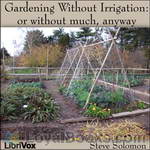 Gardening Without Irrigation: or without much, anyway
Gardening Without Irrigation: or without much, anyway
Gardening expert Steve Solomon has written extensively on gardening techniques for the home gardener. Water conservation is the focus of this work, along with more information on how to have the healthiest plants in your garden through “fertigation”, appropriate plant rotation, and soil preparation. | |
 Organic Gardener's Composting
Organic Gardener's Composting
The art and science of composting is presented in a humorous and readable manner from the basic elements to the in-depth science. An entire chapter is devoted to composting with red worms (vermiculture), and detailed information is provided on building different types of composting units. The history of the organic gardening movement is included as well as an annotated bibliography of works on the subjects of composting and food gardening. | |
By: Stewart Edward White (1873-1946) | |
|---|---|
 The Blazed Trail
The Blazed Trail
Stewart Edward White wrote fiction and non-fiction about adventure and travel, with an emphasis on natural history and outdoor living. White's books were popular at a time when America was losing its vanishing wilderness and many are based on his experiences in mining and lumber camps. The Blazed Trail is the story of early lumbermen in the northern woods of Michigan. The novel portrays the challenges faced by the workers focusing on one, Harry Thorpe, as he endeavors to be successful though completely unskilled when he enters the woods... | |
By: Susan Stokes (1862-1937) | |
|---|---|
 Ten Common Trees
Ten Common Trees
These are short sketches of ten common trees found in North America -- Black Willow, American Elm, Apple Tree, Horse-Chestnut, Birch, White Oak, Chestnut, Walnut, Cone Bearers, Red Maple. The simple writing style makes the book suitable to be used in schools. | |
By: Susanna Moodie (1803-1885) | |
|---|---|
 Roughing It in the Bush
Roughing It in the Bush
'Roughing It In the Bush' is Susanna Moodie's account of how she coped with the harshness of life in the woods of Upper Canada, as an Englishwoman homesteading abroad. Her narrative was constructed partly as a response to the glowing falsehoods European land-agents were circulating about life in the New World. Her chronicle is frank and humorous, and was a popular sensation at the time of its publication in 1852. | |
By: Theodore Roosevelt | |
|---|---|
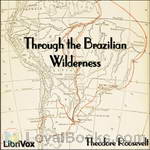 Through the Brazilian Wilderness
Through the Brazilian Wilderness
Roosevelt’s popular book Through the Brazilian Wilderness describes his expedition into the Brazilian jungle in 1913 as a member of the Roosevelt-Rondon Scientific Expedition co-named after its leader, Brazilian explorer Cândido Rondon. The book describes all of the scientific discovery, scenic tropical vistas and exotic flora, fauna and wild life experienced on the expedition. One goal of the expedition was to find the headwaters of the Rio da Duvida, the River of Doubt, and trace it north to the Madeira and thence to the Amazon River... | |
 Good Hunting: In Pursuit of Big Game in the West
Good Hunting: In Pursuit of Big Game in the West
Theodore Roosevelt was one of the most passionate of natural conservationsts having establish five national parks, 18 national monuments, and 150 national forests and other protected areas. Part of his enchantment with the wild lands of the American West was big game hunting. These chapters were originally published in Harper’s Round Table, stories of the elk, bear, wolf, antelopes, and goats, concluding with a view of ranching. - Summary by Larry Wilson | |
By: Thomas Gilbert Pearson (1873-1943) | |
|---|---|
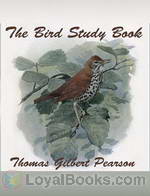 The Bird Study Book
The Bird Study Book
Do you enjoy birdwatching? Would you like to learn a little more about the early conservations efforts to protect wild birds? In the Preface to The Bird Study Book, Pearson tells us “This book was written for the consideration of that ever-increasing class of Americans who are interested in acquiring a greater familiarity with the habits and activities of wild birds. Attention is also given to the relation of birds to mankind and the effect of civilisation on the bird-life of the country. ” An avid ornithologist, T... | |
By: Thomas Henry Huxley (1825-1895) | |
|---|---|
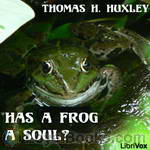 Has a Frog a Soul?
Has a Frog a Soul?
Thomas Huxley, known as “Darwin’s Bulldog” for his championing and development of Darwinism, was perhaps the most important Victorian biologist after Darwin himself. This speech to the Metaphysical Society in 1870 is one of Huxley’s best known texts outside the sphere of his specialism, and remains read today by students of philosophy. In it, Huxley argues from the results of vivisection to metaphysics. | |
By: Thomas Mann (1875-1955) | |
|---|---|
 Bashan And I
Bashan And I
Simple and unpretentious as a statement by Francis d’Assisi, yet full of a gentle modern sophistication and humour, this little work will bring delight and refreshment to all who seek flight from the heavy-laden hour. It is, moreover, one of the most subtle and penetrating studies of the psychology of the dog that has ever been written—tender yet unsentimental, realistic and full of the detail of masterly observation and description, yet in its final form and precipitation a work of exquisite literary art. - Summary from the Foreword by Herman George Scheffauer | |
By: Thomas R. Malthus (1766-1834) | |
|---|---|
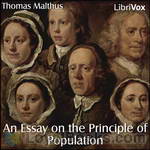 An Essay on the Principle of Population
An Essay on the Principle of Population
The power of population is indefinitely greater than the power in the earth to produce subsistence for man. Population, when unchecked, increases in a geometrical ratio. Subsistence increases only in an arithmetical ratio. A slight acquaintance with numbers will show the immensity of the first power in comparison with the second (Malthus). | |
By: Thomas Southwood Smith (1788-1831) | |
|---|---|
 Use Of The Dead To The Living
Use Of The Dead To The Living
In 1827 Thomas Southwood-Smith published The Use of the Dead to the Living, a pamphlet which argued that the current system of burial in the United Kingdom was a wasteful use of bodies that could otherwise be used for dissection by the medical profession. "If, by any appropriation of the dead, I can promote the happiness of the living, then it is my duty to conquer the reluctance I may feel to such a disposition of the dead, however well-founded or strong that reluctance may be". Southwood-Smith's lobbying helped lead to the 1832 Anatomy Act, the legislation which allowed the state to seize unclaimed corpses from workhouses and sell them to surgical schools... | |
By: Thornton W. Burgess (1874-1965) | |
|---|---|
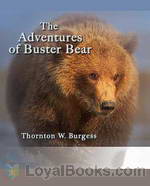 The Adventures of Buster Bear
The Adventures of Buster Bear
Known to generations of children and their parents as the Bedtime Story Man, Thornton Waldo Burgess wrote nearly two hundred much loved children's books. They were tales that recounted the doings of delightful characters who inhabited the Green Meadow and the Green Forest. Burgess, who was also an ardent conservationist besides being a writer and journalist shared his love of Nature and respect for all beings who share this earth with us. The Adventures of Buster Bear is a fun children's book that helps children understand that animals and the forest deserve respect and it is also a sincere call for responsible conservationism... | |
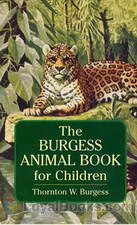 The Burgess Animal Book for Children
The Burgess Animal Book for Children
Peter Rabbit goes to school, with Mother Nature as his teacher. In this zoology book for children, Thornton W. Burgess describes the mammals of North America in the form of an entertaining story, including plenty of detail but omitting long scientific names. There is an emphasis on conservation. | |
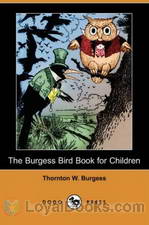 The Burgess Bird Book for Children
The Burgess Bird Book for Children
The Burgess Bird Book for Children is a zoology book written in the form of a story featuring Peter Rabbit. Peter learns from his friend Jenny Wren all about the birds of North America, and we meet many of them in the Old Orchard, the Green Meadow, and the Green Forest. | |
 The Adventures of Jimmy Skunk
The Adventures of Jimmy Skunk
The Adventures of Jimmy Skunk is another in the long list children’s books by the conservationist, Thornton W. Burgess. In this book, Jimmy Skunk has encounters with Reddy Fox, Peter Rabbit, Unc’ Billy Possum and other acquaintances of his in the Green Meadows and Green Forest. Along the way, we learn some of the habits of Jimmy and his friends and we learn little lessons about life such as the importance of always keeping one’s temper, keeping promises and not playing practical jokes. We are also treated to a philosophical discussion by Jimmy Skunk on the advantages of defensive weaponry. | |
 The Adventures of Paddy Beaver
The Adventures of Paddy Beaver
The Adventures of Paddy Beaver is another in the long list of children’s books by the conservationist, Thornton W. Burgess. In this book, the industrious and clever Paddy Beaver, a newcomer to the Green Forest, has encounters with Sammy Jay, Jerry Muskrat, Ol’ Man Coyote and other inhabitants of the Green Forest. Along the way, we learn how Paddy builds his dam and his house, and how he stores his food. We also learn little lessons about life, such as the importance of planning before doing, caring for Nature, trusting others, the benefits of working together and how wonderful it is to have a job one can sink one’s teeth into. | |
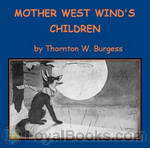 Mother West Wind's Children
Mother West Wind's Children
“You can’t fool old Mother Nature. No, Sir, you can’t fool old Mother Nature, and it’s of no use to try.” The animals of the Green Meadows and Green Forest have little adventures while Grandfather Frog tells stories to Mother West Wind’s children, the Merry Little Breezes. | |
By: Tickner Edwardes (1865-1944) | |
|---|---|
 Bee-Master of Warrilow
Bee-Master of Warrilow
"Is it true that a bee can only sting once?" I asked him, as he bent again over the crocus beds. He laughed. "What would be the good of a sword to a soldier," he said, "if only one blow could be struck with it? It is certainly true that the bee does not usually sting a second time, but that is only because you are too hasty with her. ...But now watch how the thing works naturally." A bee had settled on his hand as he was speaking. He closed his fingers gently over it, and forced it to sting. "Now," he continued, quite unconcernedly, "look what really happens... | |
 Lore of the Honey-Bee
Lore of the Honey-Bee
The sun shines — you know it has always shone, changeless as Time itself. With such a faith — unfounded and therefore incontestable — I came under the glow of one brave June morning, threading field after field of blossoming clover until I stood at the gate of the bee-garden over against the hill. I raised the latch of the gate. Its sharp click drew to its full lean height a figure at the end of the garden, which was bending down in the midst of a wilderness of hives. The man came towards me coatless, his rolled-up shirt-sleeves baring wiry brown arms to the hot June sun... | |
By: Titus Lucretius Carus (94? BC - 49? BC) | |
|---|---|
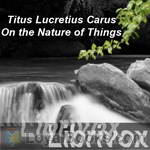 On the Nature of Things
On the Nature of Things
Written in the first century b.C., On the Nature of Things (in Latin, "De Rerum Natura") is a poem in six books that aims at explaining the Epicurean philosophy to the Roman audience. Among digressions about the importance of philosophy in men's life and praises of Epicurus, Lucretius created a solid treatise on the atomic theory, the falseness of religion and many kinds of natural phenomena. With no harm to his philosophical scope, the author composed a didactic poem of epic flavor, of which the imagery and style are highly praised. | |
By: United States Rubber Company | |
|---|---|
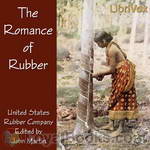 The Romance of Rubber
The Romance of Rubber
This pamphlet was published in the early 20th century by the United States Rubber Company so that “coming generations of our country … have some understanding of the importance of rubber in our every day life… We believe the rubber industry will be better off if the future citizens of our country know more about it.” Learn about Christopher Columbus’s discovery of rubber, how the crafty British entrepreneur, Wickham, managed to smuggle rubber seedlings out of Brazil, and how rubber manufacturing came to be a “peculiarly American industry... | |
By: Unknown | |
|---|---|
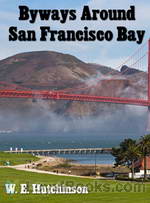 Byways Around San Francisco Bay
Byways Around San Francisco Bay
California, the land of sunshine and roses, with its genial climate, its skies as blue as the far-famed skies of Venice, and its pure, life-giving air, invites the lover of nature to take long tramps over hill and dale, mountain and valley, and to search out new trails in the rugged mountains. (Quote from section 2: Brook and Waterfall). | |
By: US Comm. for the Global Atmospheric Research Program | |
|---|---|
 Understanding Climatic Change
Understanding Climatic Change
Understanding Climatic Change - A Program for Action is a 1975 report by the US Committee for the Global Atmospheric Research Program. Already at this time, it was understood that a climate change was taking place, and that it was possibly happening due to human influences. The report gives an overview of past climates, a projection of future climate; it talks about state-of-the-art simulations and lays out a plan for future research and action. | |
By: Vance Randolph (1892-1980) | |
|---|---|
 Life Among the Butterflies
Life Among the Butterflies
Vance Rudolph's informative work about butterflies includes a summary of current butterfly literature, butterfly body structure, life cycle, and egg laying process, as well as their classification and survival strategies. - Summary by Tatiana Chichilla | |
By: Various | |
|---|---|
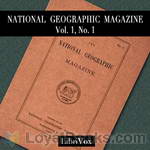 National Geographic Magazine Vol. 01 No. 1.
National Geographic Magazine Vol. 01 No. 1.
National Geographic Magazine Volume 1 Number 1 published in 1889. Topics of articles are:Announcement by the National Geographic SocietyIntroductory Address by the PresidentGeographic Methods in Geologic InvestigationClassification of Geographic Forms by GenesisThe Great Storm of March 11 to 14, 1888The Great Storm off the Atlantic Coast of the United States, March 11th to 14th, 1888The Survey of the CoastThe Survey and Map of Massachusetts | |
 John Stuart Mill; His Life and Works
John Stuart Mill; His Life and Works
This biography is actually a series of essays by prominent personalities of the time that shed light on John Stuart Mill's life and areas of endeavor. Those areas include his experiences in India House, his moral character, certain botanical explorations, how effective he was as a critic, studies in morals and the law, and discoveries concerning political economy. They also explore ideas concerning his influence on institutions of higher learning, accomplishments as a politician, and fame as a philosopher. | |
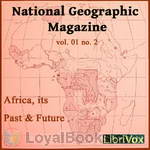 National Geographic Magazine Vol. 01 No. 2
National Geographic Magazine Vol. 01 No. 2
National Geographic Magazine Volume 1 Number 2 published in 1889. Topics of articles are:Africa, its Past and Future Reports on:Geography of the LandGeography of the SeaGeography of the AirGeography of Life | |
 Birds and All Nature, Vol. VI, No 3, October 1899
Birds and All Nature, Vol. VI, No 3, October 1899
"Birds and All Nature" was a monthly publication of the Nature Study Publishing Company of Chicago. It includes short poems and brief descriptions of birds, animals and other natural subjects with accompanying color plates. The magazine was published from 1897-1907 under the various titles, "Birds," "Birds and all Nature," "Nature and Art" and "Birds and Nature." - Summary by J. M. Smallheer | |
 Birds and All Nature, Vol. V, No 4, April 1899
Birds and All Nature, Vol. V, No 4, April 1899
"Birds and All Nature" was a monthly publication of the Nature Study Publishing Company of Chicago. It includes short poems and brief descriptions of birds, animals and other natural subjects with accompanying color plates. The magazine was published from 1897-1907 under the various titles, "Birds," "Birds and all Nature," "Nature and Art" and "Birds and Nature." - Summary by J. M. Smallheer | |
 Birds and All Nature, Vol. VI, No 4, November 1899
Birds and All Nature, Vol. VI, No 4, November 1899
"Birds and All Nature" was a monthly publication of the Nature Study Publishing Company of Chicago. It includes short poems and brief descriptions of birds, animals and other natural subjects with accompanying color plates. The magazine was published from 1897-1907 under the various titles, "Birds," "Birds and all Nature," "Nature and Art" and "Birds and Nature." - Summary by J. M. Smallheer | |
 Birds and All Nature, Vol. VI, No 1, June 1899
Birds and All Nature, Vol. VI, No 1, June 1899
"Birds and All Nature" was a monthly publication of the Nature Study Publishing Company of Chicago. It includes short poems and brief descriptions of birds, animals and other natural subjects with accompanying color plates. The magazine was published from 1897-1907 under the various titles, "Birds," "Birds and all Nature," "Nature and Art" and "Birds and Nature." - Summary by J. M. Smallheer | |
 Birds and All Nature, Vol. V, No 5, May 1899
Birds and All Nature, Vol. V, No 5, May 1899
"Birds and All Nature" was a monthly publication of the Nature Study Publishing Company of Chicago. It includes short poems and brief descriptions of birds, animals and other natural subjects with accompanying color plates. The magazine was published from 1897-1907 under the various titles, "Birds," "Birds and all Nature," "Nature and Art" and "Birds and Nature." - Summary by J. M. Smallheer | |
 Birds and All Nature, Vol. VI, No 2, September 1899
Birds and All Nature, Vol. VI, No 2, September 1899
"Birds and All Nature" was a monthly publication of the Nature Study Publishing Company of Chicago. It includes short poems and brief descriptions of birds, animals and other natural subjects with accompanying color plates. The magazine was published from 1897-1907 under the various titles, "Birds," "Birds and all Nature," "Nature and Art" and "Birds and Nature." - Summary by J. M. Smallheer | |
 Birds and All Nature, Vol. VI, No 5, December 1899
Birds and All Nature, Vol. VI, No 5, December 1899
"Birds and All Nature" was a monthly publication of the Nature Study Publishing Company of Chicago. It includes short poems and brief descriptions of birds, animals and other natural subjects with accompanying color plates. The magazine was published from 1897-1907 under the various titles, "Birds," "Birds and all Nature," "Nature and Art" and "Birds and Nature." - Summary by J. M. Smallheer | |
 Birds and All Nature, Vol. VII, No 1, January 1900
Birds and All Nature, Vol. VII, No 1, January 1900
"Birds and All Nature" was a monthly publication of the Nature Study Publishing Company of Chicago. It includes short poems, stories and brief descriptions of birds, animals and other natural subjects with accompanying color plates. The magazine was published from 1897-1907 under the various titles, "Birds," "Birds and all Nature," "Nature and Art" and "Birds and Nature." - Summary by J. M. Smallheer | |
 Guides to Belle Vue Zoological Gardens 1891-1917
Guides to Belle Vue Zoological Gardens 1891-1917
Guides to the Belle Vue Zoological Gardens from the Chetham's Library Virtual Belle Vue Collection. The Belle Vue gardens opened in 1836 as a place of genteel entertainment for the middle classes of industrial Manchester, but soon became one the most popular attractions in the north of England. The 1891 guide details the animals on view and the features of the amusement park. The 1917 guide notes the addition of new snake and ape houses, attractions such as Laughterland and a Figure of 8 Toboggan, and the Kings Hall, which hosted major concerts and sporting events through to the 1970s... | |
 Birds and All Nature, Vol. VII, No 2, February 1900
Birds and All Nature, Vol. VII, No 2, February 1900
"Birds and All Nature" was a monthly publication of the Nature Study Publishing Company of Chicago. It includes short poems, stories and brief descriptions of birds, animals and other natural subjects with accompanying color plates. The magazine was published from 1897-1907 under the various titles, "Birds," "Birds and all Nature," "Nature and Art" and "Birds and Nature." - Summary by J. M. Smallheer | |
 Birds and All Nature, Vol. VII, No 3, March 1900
Birds and All Nature, Vol. VII, No 3, March 1900
"Birds and All Nature" was a monthly publication of the Nature Study Publishing Company of Chicago. It includes short poems and brief descriptions of birds, animals and other natural subjects with accompanying color plates. The magazine was published from 1897-1907 under the various titles, "Birds," "Birds and all Nature," "Nature and Art" and "Birds and Nature." - Summary by J. M. Smallheer | |
 Birds and All Nature, Vol. VII, No 4, April 1900
Birds and All Nature, Vol. VII, No 4, April 1900
"Birds and All Nature" was a monthly publication of the Nature Study Publishing Company of Chicago. It includes short poems and brief descriptions of birds, animals and other natural subjects with accompanying color plates. The magazine was published from 1897-1907 under the various titles, "Birds," "Birds and all Nature," "Nature and Art" and "Birds and Nature." - Summary by J. M. Smallheer | |
 Birds and All Nature, Vol. VII, No 5, May 1900
Birds and All Nature, Vol. VII, No 5, May 1900
"Birds and All Nature" was a monthly publication of the Nature Study Publishing Company of Chicago. It includes short poems and brief descriptions of birds, animals and other natural subjects with accompanying color plates. The magazine was published from 1897-1907 under the various titles, "Birds," "Birds and all Nature," "Nature and Art" and "Birds and Nature." - Summary by J. M. Smallheer | |
 Nature and Art, Vol. VIII, No 1, June 1900
Nature and Art, Vol. VIII, No 1, June 1900
"Birds and All Nature" was a monthly publication of the Nature Study Publishing Company of Chicago. It includes short poems and brief descriptions of birds, animals and other natural subjects with accompanying color plates. The magazine was published from 1897-1907 under the various titles, "Birds," "Birds and all Nature," "Nature and Art" and "Birds and Nature." This issue is the first published under the title "Nature and Art." “Birds and All Nature” was established January 1897 as “Birds”... | |
 Birds and Nature, Vol. VIII, No 2, September 1900
Birds and Nature, Vol. VIII, No 2, September 1900
"Birds and Nature" was a monthly publication of the Nature Study Publishing Company of Chicago. It includes short poems and brief descriptions of birds, animals and other natural subjects with accompanying color plates. The magazine was published from 1897-1907 under the various titles, "Birds," "Birds and all Nature," "Nature and Art" and "Birds and Nature." In June 1900, “Birds and All Nature” was changed from “Birds and All Nature” to "Nature and Art" for a single issue . The title was changed again for the following issue in September 1900 to “Birds and Nature,” and this was kept through the remaining years of publication. - Summary by J. M. Smallheer | |
 Birds and Nature, Vol. VIII, No 3, October 1900
Birds and Nature, Vol. VIII, No 3, October 1900
"Birds and Nature" was a monthly publication of the Nature Study Publishing Company of Chicago. It includes short poems and brief descriptions of birds, animals and other natural subjects with accompanying color plates. The magazine was published from 1897-1907 under the various titles, "Birds," "Birds and all Nature," "Nature and Art" and "Birds and Nature." In June 1900, “Birds and All Nature” was changed from “Birds and All Nature” to "Nature and Art" for a single issue . The title was changed again for the following issue in September 1900 to “Birds and Nature,” and this was kept through the remaining years of publication. - Summary by J. M. Smallheer | |
 Birds and Nature, Vol. VIII, No 4, November 1900
Birds and Nature, Vol. VIII, No 4, November 1900
"Birds and Nature" was a monthly publication of the Nature Study Publishing Company of Chicago. It includes short poems and brief descriptions of birds, animals and other natural subjects with accompanying color plates. The magazine was published from 1897-1907 under the various titles, "Birds," "Birds and all Nature," "Nature and Art" and "Birds and Nature." In June 1900, “Birds and All Nature” was changed from “Birds and All Nature” to "Nature and Art" for a single issue . The title was changed again for the following issue in September 1900 to “Birds and Nature,” and this was kept through the remaining years of publication. - Summary by J. M. Smallheer | |
 Birds and Nature, Vol. VIII, No 5, December 1900
Birds and Nature, Vol. VIII, No 5, December 1900
"Birds and Nature" was a monthly publication of the Nature Study Publishing Company of Chicago. It includes short poems, stories and brief descriptions of birds, animals and other natural subjects with accompanying color plates. The magazine was published from 1897-1907 under the various titles, "Birds," "Birds and All Nature," "Nature and Art" and "Birds and Nature." In June 1900, “Birds and All Nature” was changed from “Birds and All Nature” to "Nature and Art" for a single issue . The title was changed again for the following issue in September 1900 to “Birds and Nature,” and this was kept through the remaining years of publication. - Summary by J. M. Smallheer | |
 Birds and Nature, Vol. IX, No 1, January 1901
Birds and Nature, Vol. IX, No 1, January 1901
"Birds and Nature" was a monthly publication of the Nature Study Publishing Company of Chicago. It includes short poems and brief descriptions of birds, animals and other natural subjects with accompanying color plates. The magazine was published from 1897-1907 under the various titles, "Birds," "Birds and all Nature," "Nature and Art" and "Birds and Nature." In June 1900, “Birds and All Nature” was changed from “Birds and All Nature” to "Nature and Art" for a single issue . The title was changed again for the following issue in September 1900 to “Birds and Nature,” and this was kept through the remaining years of publication. - Summary by J. M. Smallheer | |
 Birds and Nature, Vol. IX, No 2, February 1901
Birds and Nature, Vol. IX, No 2, February 1901
"Birds and Nature" was a monthly publication of the Nature Study Publishing Company of Chicago. It includes short poems, stories and brief descriptions of birds, animals and other natural subjects with accompanying color plates. The magazine was published from 1897-1907 under the various titles, "Birds," "Birds and All Nature," "Nature and Art" and "Birds and Nature." In June 1900, “Birds and All Nature” was changed from “Birds and All Nature” to "Nature and Art" for a single issue . The title was changed again for the following issue in September 1900 to “Birds and Nature,” and this was kept through the remaining years of publication. - Summary by J. M. Smallheer | |